#nocturnal & arboreal
Explore tagged Tumblr posts
Text



#aguirre the wrath of god#1972#werner herzog#silky anteater#nocturnal & arboreal#very much awake at night as someone said in the notes#klaus kinski#cecilia rivera#film#my posts
168 notes
·
View notes
Text

A little poster I made for my den in AJPW to show my love for critter hunting. Feel free to ask me for a copy!
#animal jam#ajpw#fortis arbor's art#digital#ajpw art studio#original#image described#not enough people know about the nocturnal animal mechanic!! its such a nice lil way to get treats#both the animals here r my avatars ::-)
41 notes
·
View notes
Text

HOFFMAN'S SLOTH
Known as two toed sloth
Origin: Central and South America
Nocturnal
Arboreal
Like rain and deciduous forests
Named by German Karl Hoffman
Spend most of their time in trees
Slow movers, will move faster when excited
Poor eyesight and hearing ... Wikipedia
5 notes
·
View notes
Text
How does one get a Gooty Sapphire Ornamental Tarantula to model for a jewelry advertisement?
Introduction to the Gooty Sapphire Ornamental Tarantula The Gooty Sapphire Ornamental Tarantula, scientifically known as Poecilotheria metallica, is an arachnid that captures attention with its striking cobalt blue coloration and intricate patterns. Native to the forests of Andhra Pradesh in India, this tarantula is often compared to a living gem, making it a fascinating candidate for a jewelry…
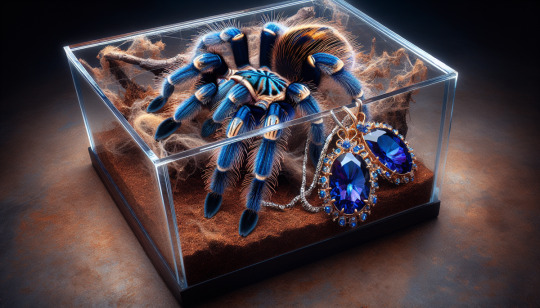
View On WordPress
#animal modeling#animal training#animal welfare#arboreal tarantulas#creative photography#endangered species#exotic animal conservation#exotic pets#exotic pets care#exotic species#Gooty Sapphire Ornamental Tarantula#jewelry advertisement#jewelry campaign#jewelry marketing#nature in advertising#nocturnal animals#pet photography#pet tarantulas#photography techniques#Poecilotheria metallica#spider beauty#tarantula behavior#tarantula handling#tarantula photoshoot#tarantula safety#unique advertisements#vibrant colors#wildlife awareness#wildlife photography
0 notes
Text
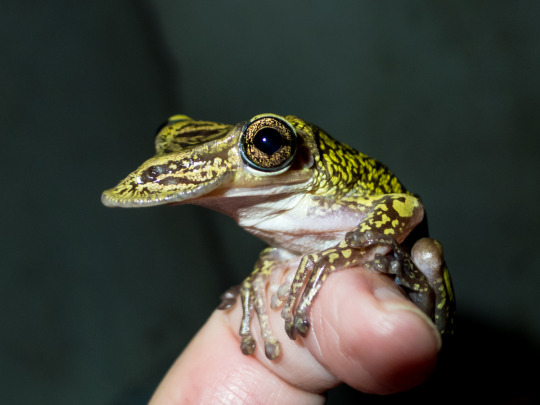
Snoot boopers, this one’s for you! Meet the duck-billed tree frog (Triprion spatulatus). Found on Mexico’s Pacific coast, this species inhabits altitudes of up to 1,640 ft (500 m). Arboreal and primarily nocturnal, it feeds on invertebrates including crickets, grasshoppers, and spiders. Scientists have observed this critter using its shovel-like head to plug the openings of its burrows, guarding itself while it rests inside, which is why it’s also known as the shovel-headed tree frog.
Photo: magazhu, CC BY-NC-ND 4.0, iNaturalist
#science#natural history#animals#frog#amphibians#animal kingdom#cool animals#fact of the day#animal facts#weird animals
2K notes
·
View notes
Text

Tentative not-bat bat-analogue Beasts (wip concept)
These guys are a group of small mammals capable of true flight, descended from primarily herbivorous and frugivorous gliding ancestors. Their wing membrane extends along a single lengthened digit, and they retain their other fingers and claws to navigate arboreally (or for quadrupedal ground movement, in the case of more derived genera).
They dominate niches less accessible to birds, primarily as nocturnal feeders. They rely on their disgustingly huge eyes/excellent night vision and and good hearing to detect prey and evade predators. Most are fairly well adapted to arboreal lifestyles (though will have lost some of this specialization in favor of flight) and have sharp, hooked claws and flexible ankles on their hind legs to assist in climbing. Their young are born tiny and premature and cling to the mother’s chest until they’ve grown strong enough to fly. Many would have relatively long periods of dependence on their mothers (even after 'fledging') to learn the complexities of finding food sources and navigating their forest homes.
The ones in this drawing would be a more basal example of forest dwellers that primarily feed on leaves, shoots, and fruits. The majority of these guys would be similarly specialized herbivores, but other more derived groups would include much smaller, more batlike insectivores, and a few specialized predators of small mammals in a similar capacity to owls. There also may be a grouping of much larger animals specialized for scavenging in more open habitats, which have lost their arboreal adaptations in favor of quadrupedal land movement when not flying.
Their wing structure broadly resembles that of the now extinct dragons (azhdarchid pterosaurs), and I expect these guys to have colloquial names in the vein of 'rat-dragons' in regions with strong cultural memories of their much larger reptilian counterparts.
#creatures#Kind of just a pretty basic What If Colugo Obtained True Flight as of now we'll see how it goes
296 notes
·
View notes
Text

The Amazon Milk Frog (Trachycephalus resinifictrix) is a large species of arboreal frog native to the amazon rainforest in South America. They are nocturnal, have large, adhesive toe pads for climbing, and a loud barking call.
The bluish green colouration and brown markings provide camouflage amongst trees and vegetation. They arise from a combination of
1. Melanophores, cells containing black or brown melanin pigments,
2. Xanthophores, those with yellow pigments), and
3. Iridophores, which have reflective or iridescent properties rather than pigment, and appear blue.
When threatened, specialised skin glands secrete a milky, white, and toxic substance rich in alkaloids, particularly bufotoxins. This behavior, known as “foaming,” is a common defense mechanism observed in various frog species, but the Amazon milk frog is particularly well-known for the potency of its secretion. Bufotoxins are potent chemicals that can cause irritation or even be harmful if ingested or if they come into contact with mucous membranes or open wounds.
#mothyandthesquid#yarn#knitting#knit#yarnaddict#knittersofinstagram#crochet#yarnlove#yarnlover#frog#frogs and toads
183 notes
·
View notes
Text
Word List: Animals

for your next poem/story (pt. 2)
Accentor - a small Eurasian songbird with generally drab-colored plumage
Brach - a female hound
Culver - a dove or pigeon
Diprotodon - a monotypic genus of Australian Pleistocene herbivorous marsupials related to the kangaroos, resembling a rhinoceros in size, and walking on four legs
Eyas - an unfledged bird, specifically: a nestling hawk
Falanouc - (or Falanaka) a viverrine mammal, Eupleres goudotii, of Madagascar closely related to the Asiatic palm civet
Gerenuk - a large-eyed antelope (Litocranius walleri) of eastern Africa with a long neck and limbs
Huemul - (or Guemal) either of two small South American deer, Hippocamelus bisulcus and H. antisiensis, having simple forked antlers
'I'iwi - Hawaiian honeycreeper (Vestiaria coccinea) with chiefly bright vermilion plumage formerly used in making feather cloaks
Jerboa - any of several social nocturnal jumping rodents (family Dipodidae) of arid parts of Asia and northern Africa having a long tail and long hind legs
Kinkajou - a nocturnal arboreal omnivorous mammal (Potos flavus) found from Mexico to South America that is related to the raccoon and has a long prehensile tail, large eyes, and yellowish brown fur
Leveret - a hare in its first year
Murre - any of a genus (Uria) of black-and-white alcids, especially: a common seabird (U. aalge) of northern seas
Nyala - an antelope (Tragelaphus angasii) of southeastern Africa with vertical white stripes on the sides of the body, a dorsal crest of hair from the neck to the base of the tail, and in the male shaggy black hair along the underside; also: a related antelope (T. buxtoni) of Ethiopia
Olm - an elongated European cave-dwelling aquatic salamander (Proteus anguinus) with permanent external gills and small eyes covered by the skin
Pudu - a small reddish deer (Pudu pudu) of the Chilean Andes having simple antlers resembling spikes and standing only 12 or 13 inches high
Quarrion - cockatiel (i.e., a crested small gray Australian parrot, Nymphicus hollandicus, with a yellow head)
Rorqual - any of a family (Balaenopteridae) of large baleen whales that have relatively small heads, short, broad plates of baleen, and the skin of the throat marked with deep longitudinal furrows and that include the blue whale, humpback whale, minke whale, fin whale, and sei whale
Spatangid - a sea urchin of the suborder Spatangina; heart urchin
Turaco - any of a family (Musophagidae) of typically crested African birds that are related to the cuckoos and have a long tail, a short stout often colored bill, and red wing feathers
Urubu - black vulture (i.e., an American vulture, Coragyps atratus, that is smaller than the turkey buzzard and heavier in flight)
Vicuña - a long-necked mammal (Lama vicugna synonym Vicugna vicugna) of the Andes from Peru to Argentina that is related to but somewhat smaller than the guanaco, has a light brown woolly coat that is paler below, is considered to the be ancestor of the alpaca, and has been historically hunted for its wool and meat
Widgeon - any of several freshwater ducks (genus Mareca)
Xiphosura - an order of arthropods comprising the horseshoe crabs and extinct related forms and usually including only the two recent genera Limulus (synonym Xiphosurus) with representatives along the American coast of the Atlantic and Tachypleus with species along the Asiatic coast of the Pacific
Zokor - a burrowing rodent (Myotalpa aspalax) native to the Altai mountains that resembles a mole rat
More: Word Lists ⚜ Part 1
#animals#word list#writing inspiration#writeblr#langblr#dark academia#writing reference#spilled ink#creative writing#linguistics#words#light academia#literature#writers on tumblr#poets on tumblr#writing prompt#poetry#rosa bonheur#writing resources#definitions from merriam-webster and oxford
77 notes
·
View notes
Text

Northern Cacomixtle
Northern cacomixtle
The Northern Cacomixtle (Bassariscus astutus) is a nocturnal, arboreal, and omnivorous mammal native to North America. It is also known as the Ringtail or Cacomixtle Norteño.
Habitat and Distribution: The Northern Cacomixtle inhabits arid and rocky areas, typically found in the North Midwest to southern Mexico. It has been spotted in regions such as southern Oregon, California, eastern Kansas, Oklahoma, Arizona, New Mexico, Colorado, southern Nevada, Utah, Louisiana, and Texas in the United States, as well as northern Mexico.
Physical Characteristics: This animal has the size of an average cat, with a distinctive appearance featuring big purple eyes, a sharp snout, and a long tail. Its agility is remarkable, allowing it to climb rocks and trees with ease, thanks to its unique ability to rotate its rear ankles 180°.
Behavior and Diet: The Northern Cacomixtle is primarily nocturnal, feeding on a variety of omnivorous foods such as fruits, insects, and small vertebrates. Its solitary nature is reflected in its small home range, typically ranging from 20 to 130 hectares.
Conservation Status: The Northern Cacomixtle is listed as Least Concern on the IUCN Red List, indicating a stable population with no immediate conservation concerns.
Interesting Facts: The name “Cacomixtle” originates from the Nahuatl language, meaning “half-cat” or “half-puma”. This species is often confused with its “sister species”, the Bassariscus sumichrasti, found in Central America, although they inhabit different regions and have distinct habitat preferences.
112 notes
·
View notes
Note
tell me more about your second favorite venomous reptile
This genuinely made me laugh out loud, then smile, then 🥹. Haha, but since you so kindly asked…
It’s the Spiny Bush Viper. These guys are arboreal species, meaning they prefer being up in trees than on the ground. They’re great climbers and are usually found between 3000 - 8000 feet
Spiny bush vipers are so venomous that normal antivenins do not word against their bite. Luckily they are in more remote locations in African rainforests and there is very little human contact.
They will hang from trees, disguised as gnarled vines, to ambush and attack their prey, usually small mammals, lizards, frogs, and birds. Curling up into a tight S shape before they strike. The best part is that they’re nocturnal and during the day they much prefer to sleep among the flowers, and I love that for them
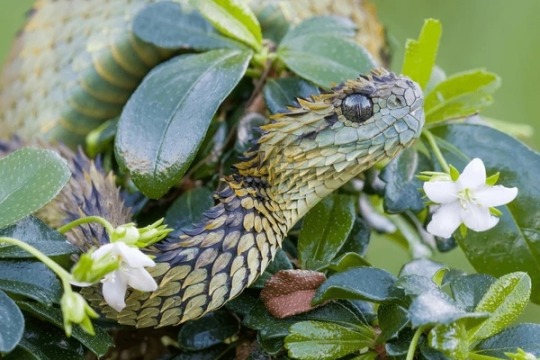
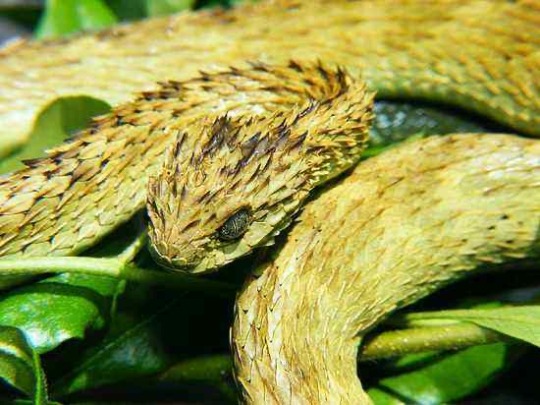
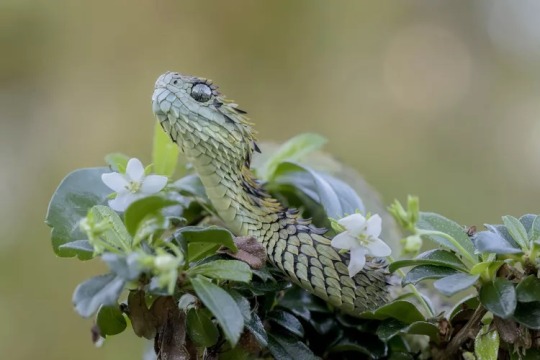
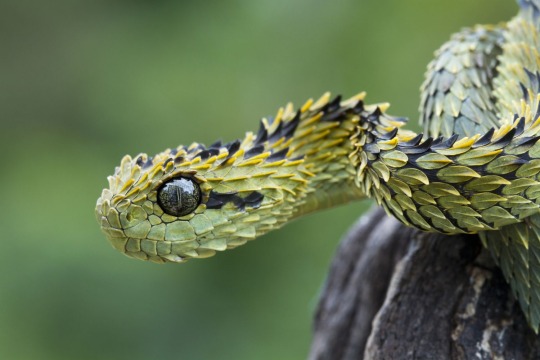
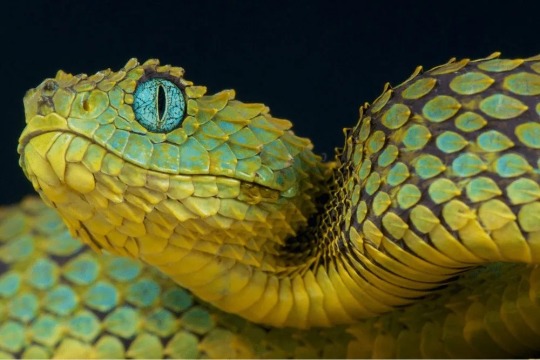
😘
#ask answered#my asks#thank you for the ask!#genuinely#snakes#herpetology#spiny bush viper#reptiles#venomous snakes#venom#snek#danger noodle#venomous#snake
143 notes
·
View notes
Text
What native Gallifreyan species are there?
Gallifrey has a diverse range of fauna, both native and introduced. Despite claims of minimal ecological impact, the installation of the Eye of Harmony and millions of years of Time Lord civilisation have significantly altered Gallifrey's original biosphere.
🦋 Invertebrates
Beatitude Flies: Begin as maggots and pupate into golden-winged nocturnal insects. They use nectar to create helium in their bellies and are attracted to light and decay.
Butterflies: Various species flutter across Gallifrey.
Bees: Essential for pollination.
Gullet Grubs: Likely to live in digestive tracts of larger mammals, or similar environments.
Blossom Thieves: Possibly insects that steal nectar or pollen.
Scrubblers: Likely small, cleaning insects.
Neversuch Beetles, Sandbeetles, Waspbeetles: Various beetles.
Dustworms: Likely live in dry, dusty environments.
Scissors Bugs: Possibly predatory insects with sharp mandibles.
Flutterwings: Gigantic insects (3 meters by 25 meters) that never land. Five races include Wild Endeavor, Mandrigal, Silver-Band, Blue Crystal, and Perdition.
Snails
Water-Sligs: Likely aquatic or semi-aquatic molluscs.
Web-Spinning Insects: Including spiders about an inch long.
Other dangerous invertebrates: There are also nasty creatures that live beneath big stones.
🐟 Marine Life
Singing Yaddlefish: Notable for their song, and they can be eaten.
Kittensharks: Hatch from eggs and presumably grow into Catsharks.
Axolotl Salamanders: Amphibious creatures with regenerative abilities.
🐍 Elapids
Taipan: A venomous snake, 10 metres long.
Venal Snakes: Possibly nest-stealers or highly venomous.
Bat-Snakes: Presumably flying snakes.
Dinosauria: 20-meter-long reptiles resembling brontosaurs with thick chitinous scales and serrated teeth.
🦅 Avians
Owls: Symbol of Rassilon.
Flurry Birds: Likely small, fast-moving birds.
Trunkikes: Game birds whose eggs are often eaten.
Air Diamonds: Fly in the upper atmosphere, possibly crystalline or bioluminescent.
Song Birds: Various species.
Gargantosaurs: Dinosaur-like creatures, twice the size of a hab-bloc, with two legs, vestigial wings (with purple and white feathers), and four eyes.
🦣 Mammals
Plungbolls: Thumbnail-sized furry creatures living in mountains, attach en masse to warm objects.
Taffelshrews: Edible rodent-like mammals.
Fledershrews: Bat-like, mushroom eaters, nearly extinct.
Cobblemice: Mice that sprout wings.
Rovie Mice: Field-dwelling, long-lived if kept safe, sometimes pets. They have short memories.
Moss-Rats: Possibly rodents that live in marshes with moss-like camouflage.
Vex: Burrowing animals.
Gallifreyan Womprats: 1-metre-long rats with fifteen legs.
Pig-Rats: Inhabit the Drylands, presumably combining porcine and rodent traits.
Rabbits
Flubbles: Small six-legged koalas.
Unnamed rounder rabbit-like creatures
Ounce-Apes: Might be tiny monkeys that are particularly agile.
Sealak: Perhaps a kind of seal, often eaten.
Bear-Ass: A donkey-like animal with bear-like qualities.
Horse-Cats: Probably a horse/cat hybrid-like species.
Sagittary: Horse-like creatures.
Elephants
Pig-Bears: Can be trained as pets.
Wolf-like Creatures: With long snouts and black-and-white striped fur, almost as big as adult humanoids.
Broakir: Live in foothills, often hunted for food.
Baanjxx: Arboreal browsers that like to eat hallucinogenic cerub nuts. As a child, the Doctor was kicked by one in the head, apparently.
Cows
Walrus
Gallifreyan Marlot: Purple and unique in all of time and space. Probably a bit cat-like.
House Cats: Revered as symbols of intelligence. Traditionally, Presidents kept them as pets.
🐱 Killer Cats (C.A.T.S)
Killer C.A.T.S: These sapient creatures possess instinctive precognitive powers and cat-like physiology. Known for their lethal gladiatorial contests, they despise Time Lord traditions and live in the Gin-Seng Sector of Southern Gallifrey. Their culture includes mercenaries and oracles; they are telepathic.
🏞️ Ecosystem Preservation
Though Gallifrey's outer ecology has suffered, the Time Lords have used technology to preserve many species. Extinct species have been collected, ensuring none become completely extinct. The more fearsome creatures are contained in the Death Zone, while xeno-zoos hold alien species from other worlds.
🏫 So ...
So there's your whistlestop tour of the species on Gallifrey. One day, I'll try to put these onto a species distribution map. Oh, by Rassilon's Beard, I just gave myself more work.
Related:
💬|🪐🌍How is Gallifreyan geography different to Earth?: The landscape of Gallifrey.
📺|🌳🍎The Fruits of Gallifrey
💬|🐾🐱What could be some biological traits of Gin-Seng cats?: Looking at who the Gin-Seng cats are, their biology, and their place on Gallifrey and in society.
Hope that helped! 😃
Any orange text is educated guesswork or theoretical. More content ... →📫Got a question? | 📚Complete list of Q+A and factoids →📢Announcements |🩻Biology |🗨️Language |🕰️Throwbacks |🤓Facts → Features: ⭐Guest Posts | 🍜Chomp Chomp with Myishu →🫀Gallifreyan Anatomy and Physiology Guide (pending) →⚕️Gallifreyan Emergency Medicine Guides →📝Source list (WIP) →📜Masterpost If you're finding your happy place in this part of the internet, feel free to buy a coffee to help keep our exhausted human conscious. She works full-time in medicine and is so very tired 😴
#doctor who#gallifrey institute for learning#dr who#dw eu#gallifrey#gallifreyans#whoniverse#ask answered#GIL: Facts#GIL: Gallifrey/Planet#GIL: Species/Gallifreyans#GIL
60 notes
·
View notes
Text

Lil sketch about the extant hominids of Encounters in The Frontier. I will eventually do a more in-depth post about them.
On the left: regular homo-sapiens humans. There is a lot of variation in size, color and complexion, just like in earth. This one in particular resembles a human from the eastern isles.
On the centre and bottom: Different facial expresions of the summerfolk. I already introduced them here.
On the right: a tree-folk. They are like a homo floriensis/tarsier mix. Mainly arboreal and nocturnal. Contact between humans and them is rare and they are not very advanced and only produce rudimentary stone tools.
#fantasy worldbuilding#spec evo#worldbuilding#creature design#fantasy art#spec bio#concept art#art#fantasy#sketches#lil sketch#lil critter#summerfolk#sophont
26 notes
·
View notes
Text
Chiropterex (Monster)
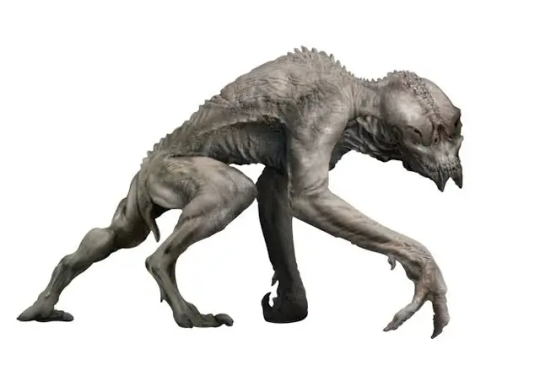
(artist unknown)
(Back in the distant era of the early 10s, my family got Netflix as a novelty. Nowadays streaming has consumed film and television like a rabid beast, but back then, my brother and I found a little British show called Primeval. Weaned on BBC nature documentaries from a young age, this was an exciting new spin on Walking with Dinosaurs, and we loved it.
The future predator is no question the most iconic creature of the series, a future bat that is both inspired by earlier spec evo and has gone on to inspire many other monster designs, including the earlier moorkutlot. It seems only fitting it be translated to Pathfinder.
By the way, I'm abandoning the proposed evolutionary history the later seasons provide- that these actually evolved to eat humans in a post-apocalyptic cityscape- and make them what I think is most obvious to me.)
CR3 TN Medium Animal HD5
Chiropterex are an aberrant species of roughly wolf-sized terrestrial bat, an arboreal, nocturnal apex predator of the islands it calls home, where no other land mammals have reached. They live in small family groups of about four to six members, typically consisting of a mated pair, a nest of about six children, a few children of previous years who stay around to help, and maybe one or two aunts or uncles. Typically, however, they hunt alone, feeding on seabirds and large moa-like ratites who evolved alongside them. These family groups keep in contact with each other using echolocation, and if a lone hunter runs into a struggle, it will call on the dissembled family to help.
Chiropterex are notorious man-eaters, and many a shipwrecked crew has met its end at a family of ravenous land bats. Many peoples of island cultures consider chiropterex to be evil spirits, and indeed there is at least one island where the magic of The Abyss has infected the local population of these predatory beasts.
Some outsiders have tried to domesticate chiropterex, or at the very least use them as weapons. They are a tempting subject of domestication; they are mobile, intelligent, fast-growing and have large clutch sizes, but all attempts so far have ended disastrously.
Chiropterex Companions
Starting Statistics: AC: +4 Size: Small Speed: 30ft, Climb 30ft Attacks: Bite (1d3), 2 Claw (1d4) Ability Scores: Str:10 Dex:22 Con:8 Int:2 Wis:12 Cha:7 Special Qualities: Blind, Blindsight 90ft, Scent Lv 4 Advancement: Size: Medium Attacks: Bite (1d4), 2 Claw (1d6) Ability Scores: Str +4 Dex -2 Con +2 Special Qualities: Flurry of Strikes
This hunched over creature has long, clawed arms and a bulbous head that ends in a short, needle-toothed mouth.
Misc- CR3 TN Medium Animal HD5 Init:+5 Senses: Perception:+6 Blind, Blindsight 90ft, Scent Stats- Str:14(+2) Dex:20(+5) Con:10(+0) Int:2(-4) Wis:12(+2) Cha:7(-2) BAB:+3 Space:5ft Reach:5ft Defense- HP:25(5d8) AC:19(+5 Dex, +4 Natural) Fort:+4 Ref:+9 Will:+3 CMD:21 Immunity: Gaze and other visual effects Weakness: Vulnerability to Sonic Offense- Bite +5(1d4+2, 18-20/x2), 2 Claw +5(1d6+2) CMB:+6 Speed:30ft, Climb 30ft Special Attacks: Pounce, Flurry of Strikes +3/+3/+3/+3(1d6+2) Feats- Dodge, Mobility Skills- +11 Climb, +10 Stealth, +6 Perception(+8 Racial to Climb) Special Qualities- Flurry of Strikes Ecology- Environment- Forest, Urban (Warm) Languages- None Organization- Solitary, Family (2-4 Chiropterex, 6-8 Young Chiropterex) Treasure- None Special Abilities- Blindsight (Ex)- A chiropterex’s blindsight is echolocation-based; it cannot sense within areas of Silence or similar spells. Flurry of Strikes (Ex)- A chiropterex may, as a full-round action, give a flurry of stabbing strikes from its claws. It makes four Claw attacks at a -2 penalty each.
#soylent original#companions and familiars#monsters and races#homebrew#primeval#future predator#speculative biology#speculative evolution
85 notes
·
View notes
Text
🌺Critter: Spotted Linsang (Prionodon pardicolor)
🌺Characteristics:
They grow to a length of 33–43 cm (13–17 inches), excluding a banded tail almost as long, and have slender bodies, relatively narrow heads, elongated muzzles, retractile claws, and dense, close fur.
🌺Habitat & Behaviour:
The Spotted linsang ↑ is found in tropical uplands in northern India and Myanmar (Burma), southern China, and Nepal.
The Oyan, or African Linsang (Poiana richardsoni), lives in western and central Africa. All three species inhabit dense forests and jungles.
This boi & it's Banded Linsang (Prionodon linsang) cousin be strictly carnivorous, but the Oyan eats plant materials as well.
All three species are nocturnal and arboreal. They usually produce two litters annually, each containing two or three young.
24 notes
·
View notes
Text
Bestiaryposting Results -- Gligglae
Sorry this is later than usual; traveling for the holidays makes it difficult to keep up with this sort of thing. The smart move would have been to write it up a couple days ahead of time, then on Monday just update it with anything new that had been posted since, but see, what happened was that I did not do that. Instead, I tried to type this up Monday evening in between various family obligations, realized I didn't have time to do it properly, and just shoved it in my drafts. Then all of Tuesday was taken up with the long drive back home from where my family lives, and now you're getting it on Wednesday.
(Also, don't worry, I followed all CDC guidelines appropriate for someone who had recently had covid, and wouldn't have traveled for the holidays at all if I hadn't been without a fever for 48 hours prior to departing. Plus I drove instead of flying, didn't visit anyone but immediate family, and had a mask the whole time, so even if I am still contagious somehow, exposure was pretty minimal.)
Anyway, the entry that our artists are working from is here:
And, of course, all previous material on this matter can be found at https://maniculum.tumblr.com/bestiaryposting.
I think a larger number of people than usual identified the animal in question right off the proverbial bat, because this one has some pretty blatant tells, but as always I appreciate everyone trying to put it out of their minds.
So, anyway, in rough chronological order:
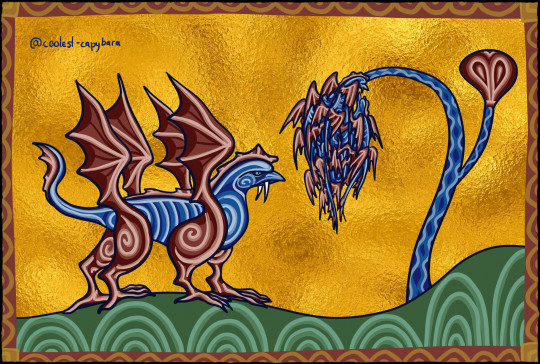
@coolest-capybara (link to post here) (thank you for providing your own alt text, I really appreciate it) brings us her usual impeccably medieval-stylized rendition -- the swirls and curves in this one give it a really interesting vibe, I think. We can see the Gligglae in full-body profile on the left there, and a group of them doing their cluster behavior on the right. The, like, griffin/cockatrice/vampire look is pretty great, also. I enjoy the overall design, which you can find some discussion of in the linked post. Gold foil also a nice touch.
Coolest-capybara also notes that the entry is very interested in the ways in which the creature is "almost, but not quite, entirely unlike a bird," and I can explain why that is. It is because this entry is in the Bird section of the bestiary, so officially this is a bird -- I mean, it flies, what else can it be -- but it's sufficiently un-bird-like that it really sticks out to the authors, so they need to explain the ways in which it's Doing Bird Wrong. Everything else in this section does X, so we need to point out that this one does Y, kind of thing.
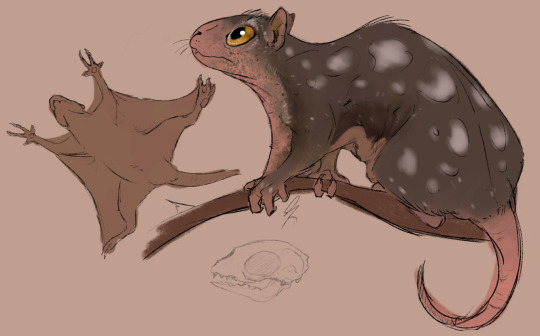
@silverhart-makes-art (link to post here) has drawn an absolutely adorable little Gligglae. (Adorable if you have my sense of aesthetics, that is -- I suspect if you're among the portion of the population that finds aye-ayes more creepy-looking than cute, that might apply here as well.) There's an explanation of design decisions in the linked post, including a number of references to real animals that provided inspiration. I like the decision to play up the "lowly" and "mean" part of the description by making it small and kind of scruffy. And the general concept of blending "gliding rodent" with "nocturnal primate" to make an arboreal mammal with elements of both really worked out well here, in my opinion.
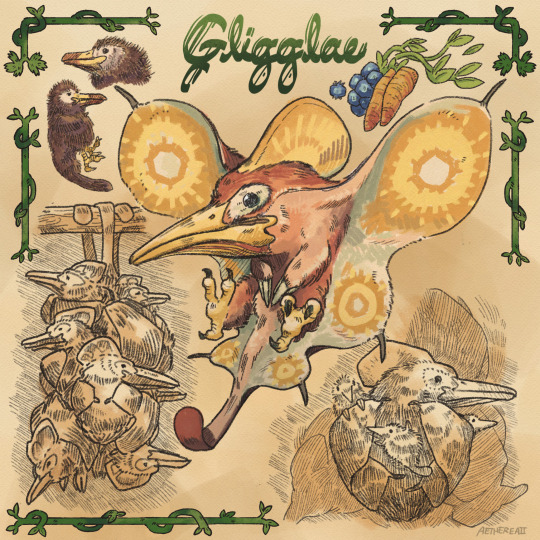
@aethereaii (link to post here) has done this beautiful piece in a style that kind of gives "19th-century naturalist" vibes. (Actually, it makes me think of James Gurney, but I suspect that association says more about my childhood reading habits than anything else.) This is a great design in my opinion, and you can find some brief discussion on design decisions as well as an earlier version of the Gligglae in the linked post. The earlier design is also very good, but I agree with Aethereaii that this one is a step up, particularly with the Anomalocaris-inspired faux-wings. I also really like the inclusion of the juvenile Gligglae (Gligglings?) clinging to their parent's back in the corner there.
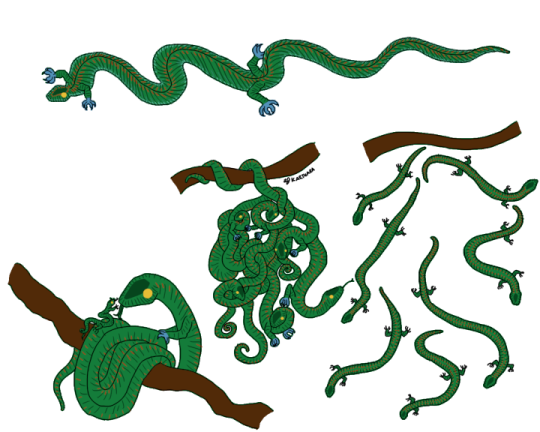
@karthara (link to post here) decided to go in a reptilian direction with this one, which (a) works well and (b) caused me to spend a chunk of time reading about flying snakes on Wikipedia just now. So in this version, the "rowing motion with its skin" is a description of the Gligglae flaring its ribs and undulating through the air -- which I genuinely think really makes sense. The entry seems to legitimately disagree with itself about whether this critter has wings (or, taking it entirely literally, it has wings but flies through a completely separate method that specifically does not involve said wings, which I think we're justified in deciding is Wrong), so I think going with such a non-wing-like flight method works here. Also like the concept of making these very cuddly (and apparently loving, according to our bestiary author) creatures into a type of animal that usually isn't seen that way. The linked post also contains some brief notes on design decisions.
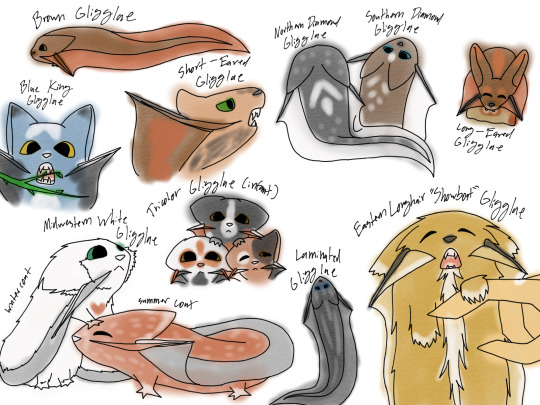
@strixcattus (link to post here) has, as per usual, provided a really excellent modern-naturalistic description of the creature they've designed in the linked post, and you should definitely go check it out right now. I'll wait.
... back? Okay good. I particularly like their interpretation of the "grape-cluster" behavior as a social group that's specifically not a kin group; and also the fact that said group is officially referred to as a "cuddle". The choice to make it a whole genus and show us several different wild and domesticated species, also very good, love it. As with several of these drawings, Strixcattus's Gligglae (Gligglaes?) are extremely cute -- which, really, does also fit the description provided in the entry. They're like tadpoles crossed with sugar gliders.

@cheapsweets (link to post here) credits Ken Sugimori's Pokemon illustrations as a stylistic inspiration, which I suppose explains why the Gligglae cluster seems to be hanging from a Sudowoodo. The linked post also draws certain parallels between medieval bestiaries and the Pokedex, which I think is actually pretty insightful. There's also a breakdown of their design decisions there, go read it. I think this is a pretty good rendering of something that is like a flying squirrel but distinctly not a flying squirrel, and I like the shaggy look of the fur.
Also, thank you for providing your own alt text.
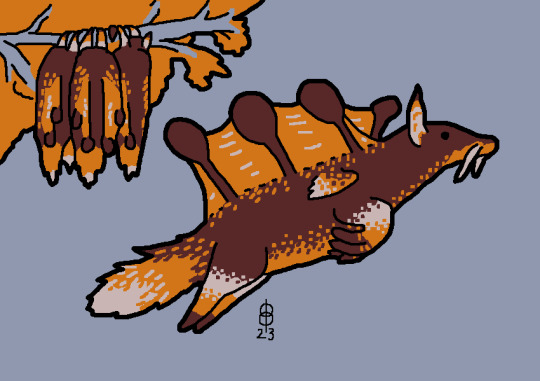
@pomrania (link to post here) is, I think, the only person to take the bestiary author at their word that this animal has wings but flies through some other, non-wing-related method. You can see the tiny useless wings at the shoulder there. I really think that's fascinating as a concept: what evolutionary pressures would produce an animal that (a) has wings and (b) flies but (c) those two things are unrelated? Although this many appendages on a fur-bearing creature puts us firmly in the "alien biology" territory, so maybe it's silly to expect it to make sense by the standards of terrestrial biology. Regardless, I like it, and I think the decision to run with the "rowing" description by giving it those oar-shaped appendages is a good & creative one. The post linked above contains a fair bit of information on design decisions and the drawing process here -- there are sketches and everything.

@vindikat (link to post here) has interpreted this in a way I find really charming. The art is of course excellent, very well drawn, and I appreciate the effort that went into doing these different poses. However, I really like it from a worldbuilding perspective: this gives me the impression of a small species of griffin that's adapted to urban living, more pigeon/cat than eagle/lion. (Come to think, both pigeons and cats are examples of feral populations finding a successful niche, rather than wild ones that adapt to a city, so maybe we can speculate that these guys are also descended from domestic ancestors.) Also the Gligglae under the eaves there remind me of pictures of chimney swifts that have made the rounds on Tumblr.
The design is also generally very appealing; I think the extra wings and the long tail really work here. The linked post includes an explanation of the design decisions that I think is worth taking a look at.
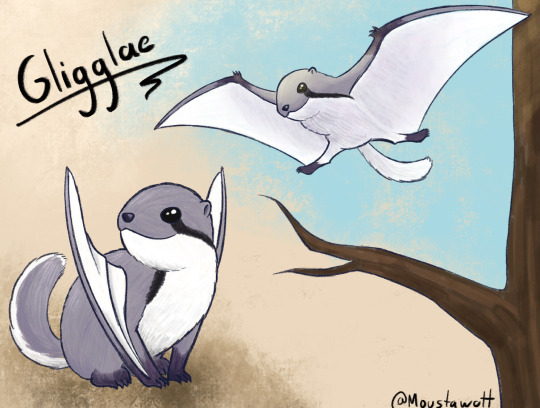
@moustawott (link to post here) has given us another very cuddly version of the Gligglae. I particularly like the wing design here, how it's kind of a mammalian version of a pterosaur -- Moustawott indicates that they were specifically trying not to draw the animal that they're sure this is, and I think the pterosaur-squirrel design here is a great way to make something that could fill kind of the same niche while being an unmistakably distinct creature. The little round head and eye markings remind me of a chipmunk, also, which is cute.
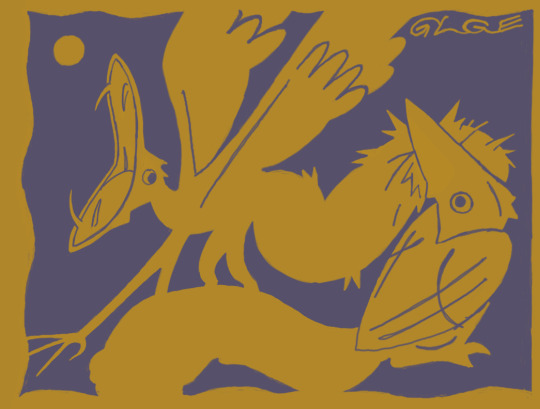
@rautavaara (link to post here) continues to do interesting stylistic stuff with their contributions. I like how the limited color palette here makes this look kind of like a single-block woodcut or similar relief printing. Like, you could plausibly see this as a design someone's carved into a wood block, then printed on mustard-yellow paper with purple ink. (I'm actually not 100% sure that's not what it is; I would just be surprised if someone actually went the extra mile of breaking out the engraving tools for my little bestiaryposting thing.) Very dynamic scene, also, and a charming creature design; love the huge mouths with pointy little fangs.
All right, these are all the ones that come up on the search; if I missed yours, let me know please.
(I have to apologize here for another delay that's absolutely my fault -- I would have had this out a few hours ago, but I got derailed by impulsively deciding to check out that Hbomberguy plagiarism video everyone's talking out, and... yeah.)
Anyway, as a number of this week's artists indicated, this one was really easy to guess, so the reveal seems a little pointless, but we have a format, so:
Obviously, this was the sheep.
What? Look, you can't make assumptions with these things. Some of these medieval bestiary entries are really counterintuitive. Medieval Europeans believed there was a species of small, highly-social, flying nocturnal sheep native to Ethiopia.
Really, it's in Pliny the Elder.
...
Yes, fine, I'm just lying to you for fun. It's the animal you all think it is, there are no flying sheep to my knowledge. Here's the Aberdeen Bestiary illustration.
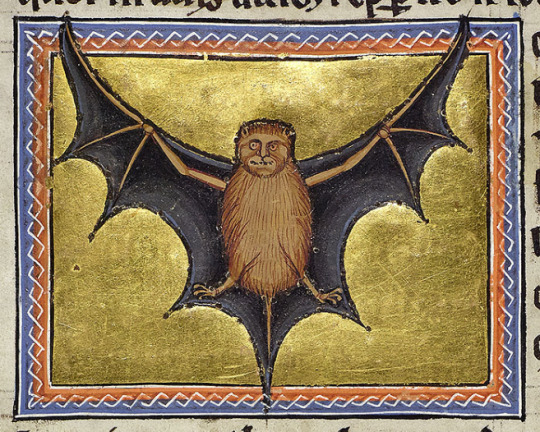
Yep, it's the bat. Oddly human face on that one, and generally I don't think this was drawn from life, but it's definitely a bat.
I do kind of find the way it's described in this entry kind of interesting, though. The confusion about whether bats count as having wings (even after having been placed in the "bird" category) is kind of odd, and the "rowing" description is not one I would have ever thought of. I very much like the declaration that the way bats huddle together is "an act of love of a sort which is difficult to find among men"; it's a sweet way to talk about a creature with a generally negative reputation, which contrasts interestingly with the fact that the author also thinks of them as "lowly" and "mean". You kind of get the idea of a creature that's a bit wretched but in a sympathetic way. "Scrungly", one might say.
101 notes
·
View notes
Text

Context- Southbound is an **artificial** speculative evolution project centering primarily around the speculative biology and evolution of machines, often with a focus on aircraft. Unless specifically stated otherwise, instalments take place somewhere on the surface of the tidally-locked planet, Xoturanseria (Anser).
Specific Context-
[Not mentioned in instalment]
Sasabonsam is a relative of Manananggal, Ekek, and Wakwak, thought not in the same genus as them. Rather, it's somewhat of a sister taxon that evolved more to arboreal life than terrestrial. It *is* however, a very close relative of the Ti Marik Redshank. Unlike the three species in that genus, Sasabonsam may be found on the day side of Anser, though almost only ever in a state of rest. It primarily remains a nocturnal hunter.
Similar to its smaller relatives, Sasabonsam will siphon blood if given the opportunity, however, its siphoning attempts often are more fatal than those made by, say, Manananggal, simply due to the sheer size. Notably, Sasabonsam has a tendency to go for the neck, rather than an arm or leg.
[Mentioned in instalment]
Sasabonsam
(Asaseyaacustos yahwada)
Sasabonsam is a rare machine found in the lowland forests bordering Neahkahnie and New Mars, Hatzegonia.
Its legs are long and end in feet capable of completely reversing in a similar manner to a clouded leopard. The talons themselves are tipped with iron claws. Iron is also present in the teeth and skin, which is how much of the chirothopter gets its deep red colour.
In its range, Sasabonsam may be territorial, but more often, humans are attacked purposefully. The machine will commonly sit in trees with its feet hanging freely, ready to grasp any unfortunate being walking underneath.
The length of Sasabonsam's claws and lack of a weight-bearing pteroid prevent it from standing or walking on level surfaces. It travels either by flight, or by shambling along branches. Although it possesses a 20ft (6m) wingspan, the wings are actually proportionally rather short, allowing it to navigate easily among the dense branches of its forest home.
#southbound#speculative zoology#worldbuilding#anser#mechanical evolution#living aircraft#evolution#speculative evolution#living machine#sasabonsam#african mythology
12 notes
·
View notes